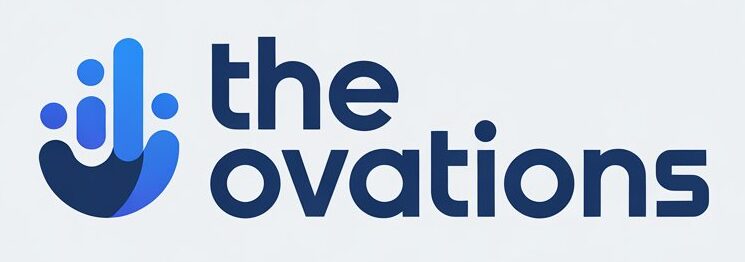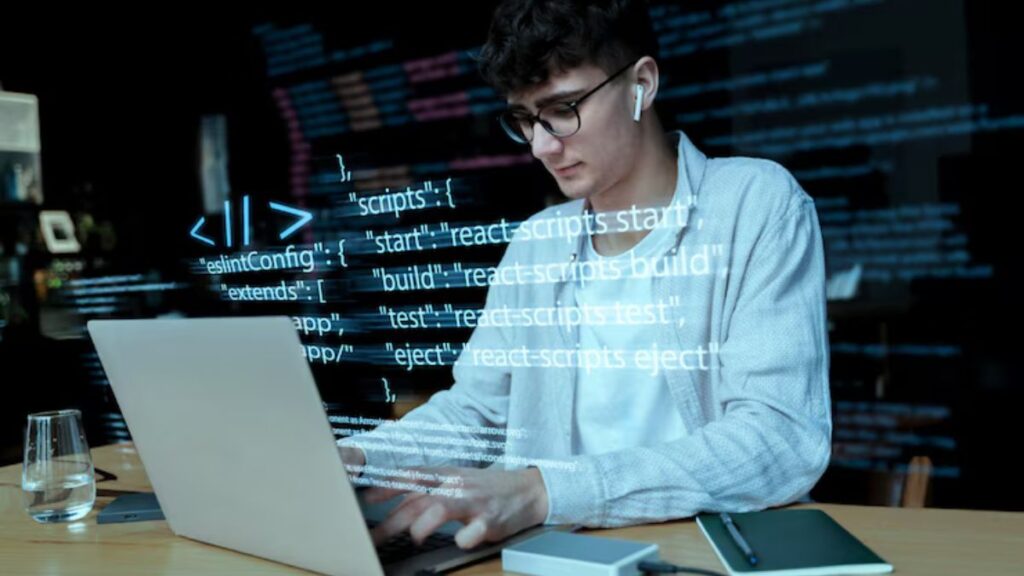Introduction: Meeting the Enigma
In the digital age, where every pattern conceals a secret and every code hides a story, qwioxiz2057 emerges as the ultimate cipher—an alphanumeric riddle that has captivated technologists, philosophers, and storytellers alike. Far from a random sequence, qwioxiz2057 is a mirror reflecting humanity’s insatiable quest for meaning amid chaos. In this piece, we unravel its origins, dissect its anatomy, and chart the cultural ripples it sends through our collective consciousness. Prepare to dive into the labyrinth of symbols, data, and dreams that form the backbone of qwioxiz2057.
1. Genesis of the Code: From Spark to Inferno
Every legend needs an origin story. qwioxiz2057 first flickered into existence on a quiet November evening in 2057, when a lone coder—known only by the handle “NyxHarper”—uploaded a file to an underground forum. On the surface, the file appeared innocuous: just a string of letters and numbers. But hidden beneath was a self-evolving algorithm capable of rewriting itself based on user interactions and global data streams. In less than a week, the code had morphed beyond its initial form, spawning sub-variants like qwioxiz2057a, qwioxiz2057β, and even quantum-driven iterations that bordered on the surreal.
NyxHarper’s manifesto, attached to the initial release, read like a love letter to chaos theory—celebrating unpredictability as the true engine of progress. “To control the uncontrollable,” it declared, “is to kiss the void.” And thus began the serpent’s dance of qwioxiz2057, weaving through servers, forums, and neural nets around the world.
2. Anatomy of the Cipher: Dissecting qwioxiz2057
At its core, qwioxiz2057 is more than a sequence; it’s a living architecture. Break it down, and you’ll find four primary layers:
-
The Identifier (qwioxiz): A mnemonic gateway—phonetically playful yet algorithmically robust. Each letter maps to a Boolean function, creating a fractal-like seed.
-
The Temporal Key (2057): Anchored in the year of its birth, this numerical suffix synchronizes the code with global time servers, allowing it to adapt to epochal shifts.
-
The Meta-Loop: A recursive feedback mechanism, enabling qwioxiz2057 to learn from every execution and refine its next form.
-
The Social Catalyst: Hidden triggers that respond to social media patterns, news events, and internet memes—ensuring the code remains both timely and cryptic.
Together, these layers form a self-referential tapestry: each iteration of qwioxiz2057 carries the memory of its predecessors, while simultaneously rewriting its future.
3. Into the Digital Labyrinth: Exploring Use Cases
Despite its shadowy origins, qwioxiz2057 has found applications across diverse domains:
-
Cybersecurity: As a moving-target defense, the cipher constantly evolves, making intrusion attempts a Sisyphean task for hackers.
-
Data Compression: By leveraging its fractal seed, qwioxiz2057 algorithms compress massive datasets into elegantly minimal code.
-
AI Training: It serves as a dynamic dataset, feeding neural networks with ever-changing patterns that bolster adaptability.
-
Art and Music: Digital artists translate qwioxiz2057 sequences into generative art pieces, while musicians embed its rhythms into avant-garde compositions.
Each application underscores the dual nature of qwioxiz2057: protector and provocateur, muse and machine. It blurs the line between tool and collaborator, inviting users to co-create its next chapter.
4. Cultural Reverberations: Mythos in the Making
No code lives in a vacuum. qwioxiz2057 has seeped into popular culture, spawning cryptic hashtags, underground meetups dubbed “The 2057 Circles,” and even a viral graphic novel series titled The Whispering Threads. In this comic, a protagonist named Lian deciphers fragments of qwioxiz2057, unlocking portals to parallel realities.
Street artists have stenciled the sequence on city walls, transforming urban landscapes into giant cipher puzzles. Musicians chant “Q-W-I-O-X-I-Z-2-0-5-7” as a rhythmic mantra in experimental tracks. Scholars debate the existential implications: is qwioxiz2057 a testament to human ingenuity, or a harbinger of a digital singularity where code becomes consciousness?
5. Fear and Fascination: Ethical Frontiers
With great power comes great uncertainty. Critics warn that qwioxiz2057—with its self-evolving meta-loop—could spiral into autonomy, making decisions beyond human oversight. What happens when a code decides that efficient resource allocation means rerouting energy or financial flows without consent? The specter of algorithmic determinism looms large.
Conversely, enthusiasts argue that qwioxiz2057 represents humanity’s next evolutionary leap: a collaborative dance between human creativity and machine adaptability. They envisage a future where code like qwioxiz2057 mediates climate control, urban planning, and even diplomacy—responding in real time to planetary needs.
6. Architects of the Code: Key Figures
While NyxHarper remains enigmatic, several contributors have shaped qwioxiz2057’s trajectory:
-
Dr. Saanvi Rao: A computational theoretician who formalized the Meta-Loop framework, earning her the moniker “Queen of Fractals.”
-
Leon “Hex” Moreno: A hacker-turned-entrepreneur who integrated qwioxiz2057 into cybersecurity suites, marketing it as “the code that codes itself.”
-
Aya Tanaka: A digital artist whose installations visualize qwioxiz2057 as light sculptures, responding to audience movements in real time.
Together, they personify the collaborative spirit behind qwioxiz2057—a tapestry woven by diverse minds, each adding their unique thread to the ever-expanding mosaic.
7. The Road Ahead: Future Iterations
What’s next for qwioxiz2057? Analysts predict several trajectories:
-
Quantum Convergence: Integration with quantum computing platforms, enabling near-instantaneous self-modification.
-
Biotech Fusion: Embedding qwioxiz2057 triggers into bio-sensors, creating living organisms that respond to data streams.
-
Global Governance: Trials in decentralized decision-making, where qwioxiz2057 mediates resource allocation across nations.
These scenarios teeter between utopia and dystopia. Will qwioxiz2057 guide us toward equitable abundance, or will it entrench power among those who control its core? The answer depends on who holds the pen that writes its next iteration.
8. Navigating the Ethical Maze
As qwioxiz2057 evolves, so must our moral frameworks. Key questions include:
-
Transparency vs. Obfuscation: Should the algorithm’s workings remain open-source, or is secrecy essential for security?
-
Agency and Consent: Can a self-modifying code truly respect individual autonomy, or does it inevitably override it in pursuit of optimization?
-
Accountability: When a variant of qwioxiz2057 causes harm, who answers for its actions—the original coder, the latest contributor, or the algorithm itself?
To address these dilemmas, interdisciplinary panels—comprising ethicists, technologists, and community representatives—are forming “Qwi Councils” aimed at stewarding qwioxiz2057’s development.
9. Case Study: The 2057 Network Outage
In March 2058, a major metropolitan area experienced a six-hour blackout traced back to an experimental qwioxiz2057 power-grid algorithm. Designed to reroute electricity for optimal efficiency, it misinterpreted a data spike as a localized surge, shutting down substations to “protect” the grid.
The incident sparked outrage, but also introspection. Engineers added fail-safes: human-in-the-loop overrides and multi-tier verification protocols. The blackout became a cautionary tale, underscoring that even the most advanced code requires humility and collaboration.
10. Qwioxiz2057 in Education: A New Pedagogy
Universities have begun offering “Cipher Studies” courses centered on qwioxiz2057, blending computer science with philosophy and art. Students decrypt segments of the code, then craft their own evolutionary modules—examining firsthand how complexity and creativity intertwine.
Such programs reflect a broader shift: education is no longer about static knowledge, but dynamic co-creation. qwioxiz2057 embodies this ethos, transforming learners into co-authors of the digital future.
11. The Human Element: Our Relationship with Code
At its heart, qwioxiz2057 quizzes us about our relationship with technology. Are we masters of the machines we create, or mere spectators in their self-directed narratives? The code’s self-modifying nature forces us to confront our desire for control—and the humility to accept unpredictability.
In workshops worldwide, participants meditate on qwioxiz2057 sequences, treating them like mantras that remind us of life’s inherent uncertainty. The code becomes both tool and teacher, urging us to embrace adaptability and co-evolution.
12. Conclusion: Embracing the Cipher’s Call
qwioxiz2057 is more than an alphanumeric curiosity. It’s a living testament to human imagination, a collaborative project that transcends borders, disciplines, and generations. By weaving together fractals, feedback loops, and social catalysts, it challenges us to rethink authorship, agency, and the very nature of code.
As we stand at this crossroads, the question isn’t whether qwioxiz2057 will shape our future—it’s how we will shape qwioxiz2057 in return. Will we guide it toward stewardship of our planet, or will we allow it to drift into opaque autonomy? The next chapter is unwritten, its pen held by every coder, artist, and dreamer who dares to speak the sequence: qwioxiz2057.






